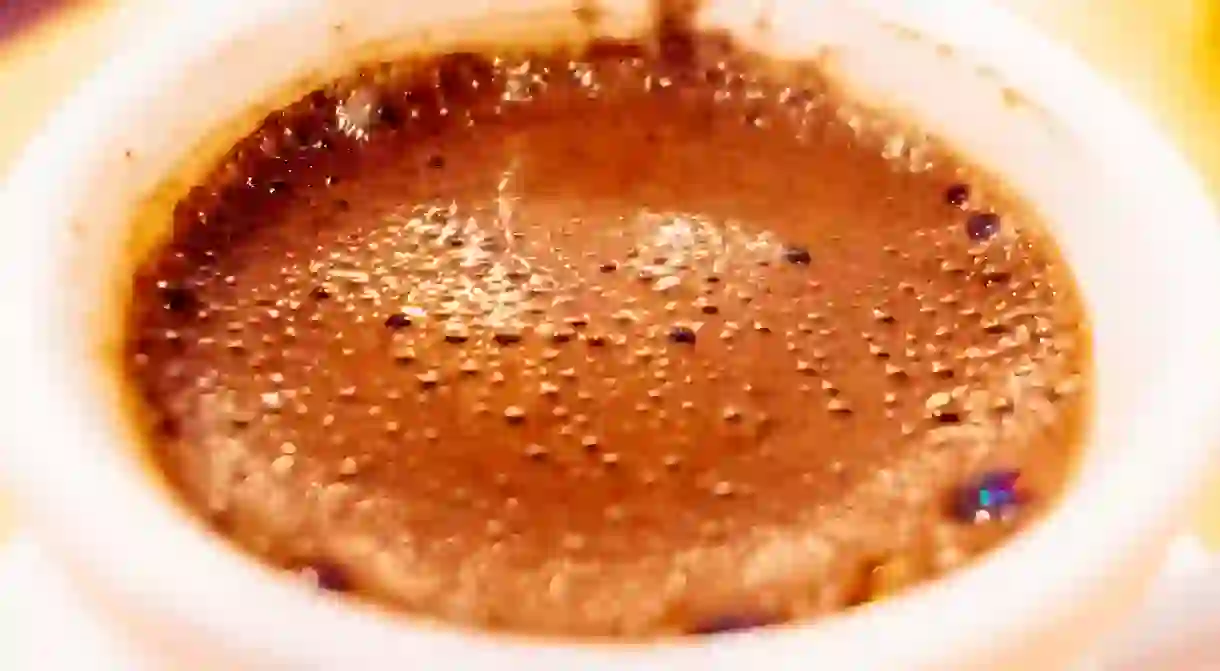Here's What to Drink if You're Going to Serbia

Živeli! Okay, getting ahead of ourselves there, but you might want to learn the Serbian word for ‘cheers!’ ahead of time. Belgrade is famous for its nightlife, and you can bet that the masses of bodies you encounter aren’t sipping tap water. There are certain drinks you will inevitably be faced with in Serbia, so here is your handy guide to what’s good and what’s Pelinkovac.
Rakija
Rakija comes in many shapes and sizes, and it may well leave you feeling like you are a variety of different shapes and sizes if you drink too much of it. It is all the same in essence, a violently strong brandy made from the fermenting of fruit, but the choice extends way beyond the many different flavours on offer. With that in mind šljivovica (plum), kajsijevača (apricot)and dunjavača (quince)are the most popular and usually the most enjoyable.
At the top of the price range you’ll find the classy stuff on offer in souvenir shops, usually characterised by flashy packaging and extortionate price tags, not to mention disingenuous claims of domestic production. In the middle is the industrial fare peddled in the supermarkets, the litres of 50%+ liqueur for what looks like a dangerously low price. Affordable? Of course. Enjoyable? That all depends on how much you imbibe.
At the bottom of the price range is the best of all options, the unlabelled plastic bottles of truly homemade rakija, likely made by someone’s grandmother. This is as domestic as it is going to get. Serbs bleed blood like everyone else on the planet, but the fruit brandy content of that bloody is a little higher than the rest of the globe. It truly is the cure for and cause of everything.

Beer
Hop lovers worldwide fear not, the craft beer revolution has not bypassed Serbia. Belgrade has more than enough beer pubs to please even the most judgmental of millennial, and the relatively low prices make Serbia an unlikely beer (pivo) paradise. Salto, Kabinet and Dogma are arguably the best, but new brews are forcing their way into the market all the time.
Serbia has plenty of lagers available too, with Jelen and Lav undoubtedly the most common. Zaječarsko is often considered best of the bunch.

Wine
There’s a reason Roman Emperors were big fans of the wines produced in Serbia, and it has nothing to do with affordability, marketing or a successful social media campaign. Serbia has some 70,000 hectares of vineyards pumping out wine in every corner of the country. Yugoslavia was one of the top 10 wine-producing states on the planet, and Serbia is doing all it can to force its way back to the top of the table. Anything from Vršac is a must for oenophiles.

Vinjak
There’s just something about Vinjak. The Serbian brandy even has a little bit of Balkan rebellion in its history. It was initially branded as ‘cognac’, but the less-than-accurate nature of this eventually caught up with it. Vinjak remains wildly popular throughout the country and somehow has managed to spread across generations despite its confusing taste. Maybe its all that glucose, although it might be best to avoid mentioning that.
Coffee
Serbia is the heart of the Balkans, and as such you can be rest assured that coffee plays an utterly vital part of every single day here. The entire spectrum of coffee is available throughout the country, but the full Serbian experience can only be attained with a steaming cup of thick, sludgy domestic coffee.
Another part of Serbian culture adopted from the Turkish occupation, there are a few things you must remember when sipping. First, slurping is not only accepted, it is encouraged. Secondly, don’t gulp the whole thing down, because you’ll be surprised and disgusted by the coffee grounds at the bottom of the cup.
Finally, don’t be worried if your fate is subsequently revealed to you when you are done with your brew. The grounds left at the bottom of the cup tell your future, and don’t you dare doubt it. Domača kava is acceptable at all hours of the day, whatever the weather.

Pelinkovac
You know what, don’t drink Pelinkovac. Fans of Jägermeister will be in their element, but we’ve never really been able to get our head (or taste buds, to be more accurate) around this bitter liqueur. Based on wormwood, which thankfully has nothing to do with wriggly garden dwellers or cabinets, Gorki Listis the most popular brand available and you can find it everywhere. Every bit social group of Serbs will have one individual drinking Pelinkovac, and nobody will be entirely sure why.

Mineral Water
So ordering a bottle of kisela voda might not be the most adventurous move one can make when in Serbia, but never fear, the nation isn’t known as the ‘land of waters’ without good reason. The abundance of natural springs across the country make for some quality H2O refreshment, with the ubiquitous Knjaz Miloš at the top of the pile. The brand is based undoubtedly the best thing ever to come from Aranđelovac, and its parent company also produces the energy drink Guarana.
Kvass
Kvass is slowly but surely making itself known in Serbia. Largely available in canned form, describing it as a ‘fermented beverage made from rye bread’ doesn’t exactly set the taste buds-a-flame, but this is an acquired taste after all. The drink is mostly associated with Russians and Ukrainians, but it has become more and more prevalent in Serbia over the past few years.













